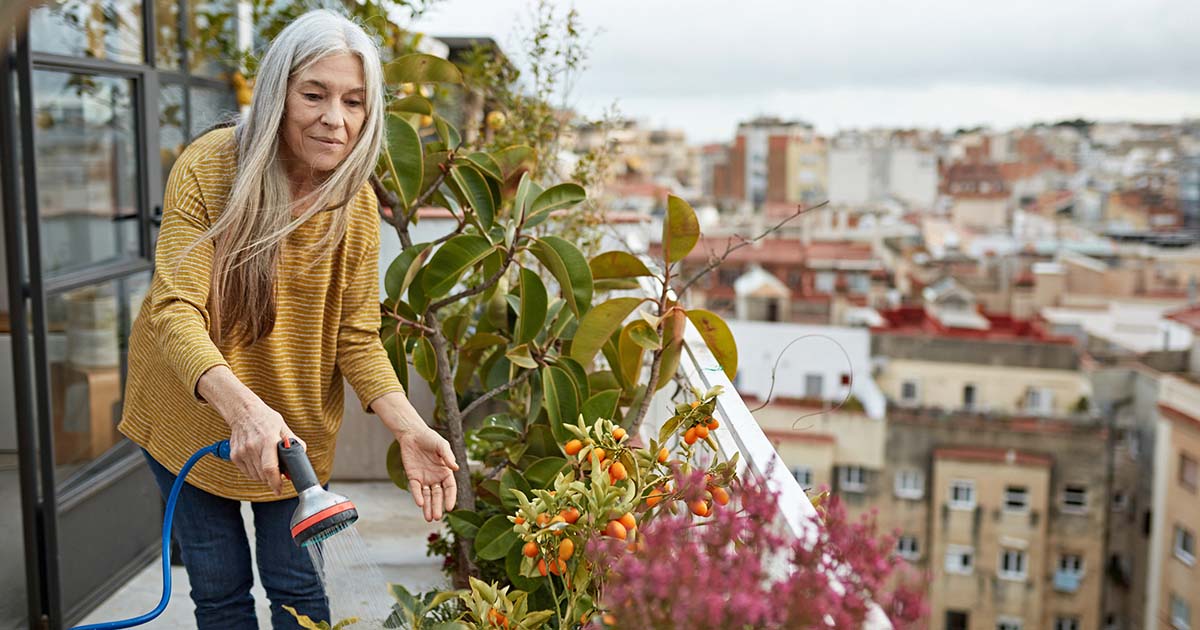Tips for Planting an Urban Garden

Do you love gardening but are short on space?
An urban garden in your backyard or on your balcony is easy with a little planning. Not only will it be a beautiful space for you to enjoy, but birds, bees, and butterflies will also appreciate the garden you create for them.
“The habitat you create can entice butterflies and other pollinators to take advantage of flowering plants that provide them with much-needed nectar and pollen. Birds will feed on insects attracted to these same plants and some, such as robins and house finches, have even been known to nest in potted plants high up on apartment balconies,” says Canadian Wildlife Federation.
Before you start
Do a little planning to figure out the best set-up for your backyard or balcony urban garden.
- If your garden will be on your balcony, find out what the restrictions are for your building and measure your space.
- Figure out which direction your outdoor space faces and how much sun it gets. If your balcony or back yard is mostly sunny, plant succulents, strawberries, grasses, thyme, oregano, lavender, or other herbs. Veggies like kale, French beans, cherry tomatoes, carrots, and radishes also do well. If your urban garden has more shade, plant ferns and herbs like parsley. Do a bit of research to find out which plants will do well in your balcony or backyard garden.
- South- and west-facing gardens need to be watered more often.
- Set a budget for your urban garden. You can do a lot with a small budget and a little creativity.
Decide what type of urban garden you want to plant
Consider what kind of garden you would like. Think about things like:
- Would you like to grow herbs or vegetables?
- Or do you want to create a green space for pollinators? Balconies on lower floors and back yards are ideal for this.
- How much time are you prepared to spend on your urban garden and are you comfortable with a lot of or a little maintenance? Some low-maintenance plants include yucca, coneflowers, petunia, zinnia, daylily, and hens and chicks.
- Getting the right supplies. Sketch a plan of your garden to refer to later.
Think vertical
A small square footage does not mean a tiny garden. “You can use stack planters, railing planters, vertical wall planters, and hanging baskets for an amazing apartment balcony garden. Bromeliads, ferns, begonias, hostas, succulents, air plants and vines make for great choices here,” explains Reader’s Digest.
Vertical gardens are perfect for small spaces and can have higher yields because more leaves get sunshine. Fruits and veggies also do not touch the ground, making them less susceptible to rotting, disease, and pests.
Almanac says, “our favorite vegetables for vertical growing are pole beans, climbing peas, sweet potatoes, vining tomatoes, and sprawling types of zucchini, cucumber, melon, and squash that can be trained up supports.”
Choose the right planters
Use containers to make the most of a small space for your urban garden. What kind of planters you use is important. Check what size of pot each plant needs to be in and how deep its roots need to grow. The Canadian Wildlife Federation says to “make sure the planter has enough depth as intended for the right plant and that it has enough holes to efficiently drain water.”
Use soil meant for containers
This type of soil weighs less and according to Fine Gardening, “garden soil doesn't offer enough air, water, or nutrients to container-grown plants.” Potting soil should drain well but still hold moisture and all-purpose potting soil should be right for most container gardens. Cover it with mulch like shredded cedar or pea gravel or moss for a shady area.
Water often
Windy urban gardens will need water once a day and terra cotta planters will need more water than plastic ones. The size of your containers and how sunny your urban garden is will also affect how much water you need.



